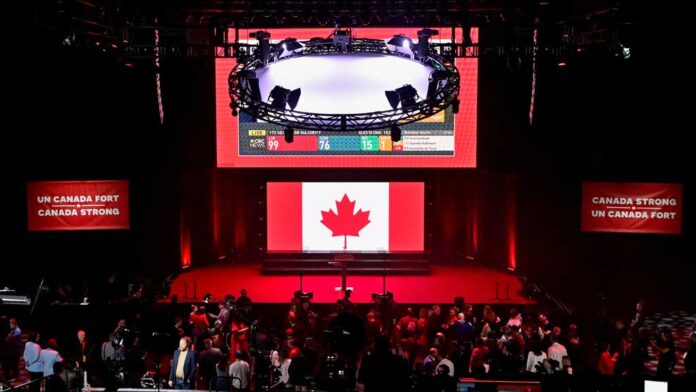Canada’s governing Liberals held onto power in Monday’s election, but it remains unclear whether they have won a majority government, according to projections by CTV News and CBC.
Prime Minister Mark Carney had sought a strong mandate to confront U.S. President Donald Trump’s tariffs and annexation threats. However, CTV and CBC reported that the Liberals had yet to secure the 172 seats needed for a majority.
The final outcome may not be known for some time and could hinge on results from British Columbia, the westernmost province, where voting concluded last.
As of the latest counts, the Liberals were leading or had been declared winners in 133 electoral districts, commonly known as seats, with the Conservatives trailing at 93 seats.
Carney had vowed to adopt a firm stance against Washington’s trade measures and pledged billions in spending to lessen Canada’s dependence on the United States. Meanwhile, the right-leaning Conservatives, campaigning on a platform for change after over nine years of Liberal governance, performed more strongly than many had anticipated.
The Canadian House of Commons consists of 343 seats. Should Carney only achieve a minority, he would need to seek agreements with other parties to remain in office. Historically, minority governments in Canada tend to last less than two and a half years.
This election outcome marks a significant resurgence for the Liberals, who had been trailing the Conservatives by 20 percentage points back in January, before unpopular former Prime Minister Justin Trudeau announced his resignation and Trump escalated threats against Canada.
The last political party to secure four consecutive federal election victories in Canada was the Liberals, achieving the feat in 2004.
The result dealt a major blow to Conservative leader Pierre Poilievre, who centered his campaign on domestic challenges and accused the Liberals of having “broken” the country.
Neither Carney’s nor Poilievre’s teams were immediately available to comment on the projections from CTV and CBC.



